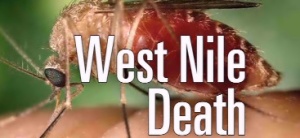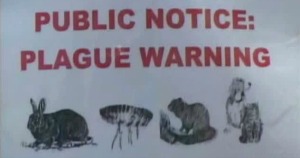
Cat with rabbit. Photo by Eddy Van 3000. Wikimedia Commons.
TULAREMIA OUTBREAK:
National 09/10/15 businessinsider.com: by Laura Zuckerman – U.S. health officials said on Thursday they were puzzled by a surge in the number of people who have contracted a rare bacterial disease usually found in rabbits that has already killed a Wyoming man and sickened dozens of people in Colorado, South Dakota and Nebraska this year. The unusually high number of cases of tularemia, sometimes called rabbit fever, have been concentrated in northeastern Wyoming and in neighboring parts of South Dakota and Nebraska and farther south in the Colorado Front Range, where there have been reported die-offs of animals like rabbits and voles that can carry the infectious disease, Wyoming health officials said. While tularemia, whose symptoms can include fever, sore throat and muscle aches, is often present in the environment, it rarely sickens more than a few people a year in Wyoming, a handful in Colorado and just a few in South Dakota, health officials said. That compares to 41 confirmed human cases so far this year in Colorado, 14 in Wyoming – the highest number in the quarter century that reliable records have been compiled – and at least 19 in South Dakota, the most since 34 people acquired the ailment in 1984, state epidemiologists said. “This is quite unusual,” South Dakota epidemiologist Lon Kightlinger said.
 The U.S. Centers for Disease Control and Prevention is studying cases in those states and Nebraska to identify common factors, Wyoming State epidemiologist Tracy Murphy said. The disease is treatable with antibiotics but can be deadly. It killed an elderly Wyoming man earlier this year after causing a severe infection of his central nervous system, Murphy said. Tularemia can be transmitted to people through handling of sick animals, including pets like cats and dogs that have come in contact with infected rabbits or rodents, as well as bites from ticks, deer flies or horse flies. Infections also are linked to activities such as lawn mowing, in which people inhale bacteria from contaminated dust, or handling animal carcasses, health officials said. – For complete article see http://www.businessinsider.com/rabbit-fever-outbreak-baffles-us-health-officials-2015-9
The U.S. Centers for Disease Control and Prevention is studying cases in those states and Nebraska to identify common factors, Wyoming State epidemiologist Tracy Murphy said. The disease is treatable with antibiotics but can be deadly. It killed an elderly Wyoming man earlier this year after causing a severe infection of his central nervous system, Murphy said. Tularemia can be transmitted to people through handling of sick animals, including pets like cats and dogs that have come in contact with infected rabbits or rodents, as well as bites from ticks, deer flies or horse flies. Infections also are linked to activities such as lawn mowing, in which people inhale bacteria from contaminated dust, or handling animal carcasses, health officials said. – For complete article see http://www.businessinsider.com/rabbit-fever-outbreak-baffles-us-health-officials-2015-9
BEAR ATTACKS:
Canada:
 British Columbia 09/07/15 globalnews.ca: by Paula Baker – Two men are recovering in hospital after being attacked by a grizzly bear sow south of Fort Nelson, B.C. on Sunday. According to B.C. Conservation, the two men were legally hunting sheep when they walked over a ridge and were attacked by a grizzly bear sow. The sow was with her two cubs in an area northeast of Buckinghorse River. The hunters, who are both in their 30s and from the Peace River area, were carrying a sheep cape and meat. The men had been part of a larger party but were in a remote area about 40 kilometres west of Alaska Highway, which is accessible only by foot, helicopter or horse, said Mark West with B.C. Conservation. West says the sow was reacting “defensively” and this was not a predatory attack. In an attempt to stop the grizzly, one hunter told conservation officers he may have gotten off two shots but was unsure if he hit the bear. – For complete article and video see http://globalnews.ca/news/2206899/two-men-injured-after-bear-attack-south-of-fort-nelson/
British Columbia 09/07/15 globalnews.ca: by Paula Baker – Two men are recovering in hospital after being attacked by a grizzly bear sow south of Fort Nelson, B.C. on Sunday. According to B.C. Conservation, the two men were legally hunting sheep when they walked over a ridge and were attacked by a grizzly bear sow. The sow was with her two cubs in an area northeast of Buckinghorse River. The hunters, who are both in their 30s and from the Peace River area, were carrying a sheep cape and meat. The men had been part of a larger party but were in a remote area about 40 kilometres west of Alaska Highway, which is accessible only by foot, helicopter or horse, said Mark West with B.C. Conservation. West says the sow was reacting “defensively” and this was not a predatory attack. In an attempt to stop the grizzly, one hunter told conservation officers he may have gotten off two shots but was unsure if he hit the bear. – For complete article and video see http://globalnews.ca/news/2206899/two-men-injured-after-bear-attack-south-of-fort-nelson/
 British Columbia 09/11/15 dailytownsman.com: by Arne Petryshen – A grizzly bear attacked an angler near Canal Flats (a village at the south end of Columbia Lake) on Wednesday night. The attack occurred just off Findlay Creek Road, about eight kilometres up. Conservation Officer Joe Caravetta said the man was walking along a path and startled a young grizzly bear at a distance of about three meters. “The bear attacked the angler, biting him on his leg and hand. The bear fled shortly and the angler made his way back to the vehicle, returned to Canal Flats and contacted 911,” Caravetta said. The man was then taken to the Invermere hospital, with non-life threatening injuries. “Conservation Officer Services and the RCMP attended at the site where the attack occurred and closed the area off and advised others in there to the incident and to leave the area,” he said. Caravetta said they determined there was no immediate threat to the public at that site at that time. Four officers attended the site Thursday morning to further investigate. “They determined that there was a large, domestic cow carcass, buried where the attack occurred,” he said. “The carcass was fairly old and consisted of mostly bones and hide. The bear was also seen by the officers and confirmed to be about a three year old grizzly — so a fairly small grizzly bear and fairly young.” Caravetta said it was at that point that a decision was made not to pursue the bear. – See http://www.dailytownsman.com/breaking_news/326678781.html
British Columbia 09/11/15 dailytownsman.com: by Arne Petryshen – A grizzly bear attacked an angler near Canal Flats (a village at the south end of Columbia Lake) on Wednesday night. The attack occurred just off Findlay Creek Road, about eight kilometres up. Conservation Officer Joe Caravetta said the man was walking along a path and startled a young grizzly bear at a distance of about three meters. “The bear attacked the angler, biting him on his leg and hand. The bear fled shortly and the angler made his way back to the vehicle, returned to Canal Flats and contacted 911,” Caravetta said. The man was then taken to the Invermere hospital, with non-life threatening injuries. “Conservation Officer Services and the RCMP attended at the site where the attack occurred and closed the area off and advised others in there to the incident and to leave the area,” he said. Caravetta said they determined there was no immediate threat to the public at that site at that time. Four officers attended the site Thursday morning to further investigate. “They determined that there was a large, domestic cow carcass, buried where the attack occurred,” he said. “The carcass was fairly old and consisted of mostly bones and hide. The bear was also seen by the officers and confirmed to be about a three year old grizzly — so a fairly small grizzly bear and fairly young.” Caravetta said it was at that point that a decision was made not to pursue the bear. – See http://www.dailytownsman.com/breaking_news/326678781.html
 Northwest Territories 09/11/15 cbc.ca: A hunter has been medevaced to Yellowknife with serious injuries after he was attacked by a grizzly bear in the Mackenzie Mountains near Norman Wells, N.W.T. The attack happened around 11 a.m. Thursday morning. According to the RCMP, the hunter and a guide were spotting moose when the bear attacked them. The hunter and the guide didn’t see the grizzly until it made its attack. RCMP say the bear pulled the hunter down an embankment and he received “multiple injuries during the attack.” The guide fired a shot which scared the bear off and stopped the attack. The injured hunter was rescued by a helicopter, treated in Norman Wells, and then medevaced to Yellowknife for more treatment. The bear is unaccounted for at this time. – See http://www.cbc.ca/news/canada/north/grizzly-bear-attacks-hunter-near-norman-wells-n-w-t-1.3224822
Northwest Territories 09/11/15 cbc.ca: A hunter has been medevaced to Yellowknife with serious injuries after he was attacked by a grizzly bear in the Mackenzie Mountains near Norman Wells, N.W.T. The attack happened around 11 a.m. Thursday morning. According to the RCMP, the hunter and a guide were spotting moose when the bear attacked them. The hunter and the guide didn’t see the grizzly until it made its attack. RCMP say the bear pulled the hunter down an embankment and he received “multiple injuries during the attack.” The guide fired a shot which scared the bear off and stopped the attack. The injured hunter was rescued by a helicopter, treated in Norman Wells, and then medevaced to Yellowknife for more treatment. The bear is unaccounted for at this time. – See http://www.cbc.ca/news/canada/north/grizzly-bear-attacks-hunter-near-norman-wells-n-w-t-1.3224822
 New Mexico 09/10/15 kob.com: by Elizabeth Reed – Game and Fish officers are searching for an adult black bear that attacked a runner on a hiking trail near Los Alamos Wednesday night. The attack occurred on the Cañon de Valle trail around 7 p.m. Officers said the man was running on the trail when he encountered a female bear and her cub. The man tried to scare the bear away by making a noise, but it charged, knocking him into a stream. The department says the bear started biting and clawing at his head. After the bear left, the man was able to walk 2.5 miles back to his car and flag down a passing motorist, who took him to Los Alamos Medical Center. He suffered deep flesh wounds and scratches to his head, according to Game and Fish. – See http://www.kob.com/article/stories/s3902741.shtml#.VfJAG_lVhBc
New Mexico 09/10/15 kob.com: by Elizabeth Reed – Game and Fish officers are searching for an adult black bear that attacked a runner on a hiking trail near Los Alamos Wednesday night. The attack occurred on the Cañon de Valle trail around 7 p.m. Officers said the man was running on the trail when he encountered a female bear and her cub. The man tried to scare the bear away by making a noise, but it charged, knocking him into a stream. The department says the bear started biting and clawing at his head. After the bear left, the man was able to walk 2.5 miles back to his car and flag down a passing motorist, who took him to Los Alamos Medical Center. He suffered deep flesh wounds and scratches to his head, according to Game and Fish. – See http://www.kob.com/article/stories/s3902741.shtml#.VfJAG_lVhBc
 New Mexico 09/12/15 santafenewmexican.com: by Staci Matlock – State Game and Fish Department officers are searching for a black bear that attacked a 60-year-old man from Missouri who was elk hunting west of Wagon Mound, the second bear attack on a person in two days in Northern New Mexico, officials said Friday. The hunter received bite injuries to his foot through his boot as he climbed a tree to try to escape the bear. He was taken to Alta Vista Hospital in Las Vegas, N.M., where he was treated and released. The attack, which occurred Thursday near the tiny village of Ocate, marked the seventh time a black bear has attacked a human in the state this year, the highest number in the past 16 years, according to Lance Cherry, a spokesman for the Game and Fish Department. It was the fourth attack this year resulting in an injury. None of the attacks was fatal. – For complete article see http://www.santafenewmexican.com/news/local_news/in-second-attack-this-week-bear-scares-hunter-up-tree/article_57453d6d-4422-5a3c-ac26-ecb9efede549.html
New Mexico 09/12/15 santafenewmexican.com: by Staci Matlock – State Game and Fish Department officers are searching for a black bear that attacked a 60-year-old man from Missouri who was elk hunting west of Wagon Mound, the second bear attack on a person in two days in Northern New Mexico, officials said Friday. The hunter received bite injuries to his foot through his boot as he climbed a tree to try to escape the bear. He was taken to Alta Vista Hospital in Las Vegas, N.M., where he was treated and released. The attack, which occurred Thursday near the tiny village of Ocate, marked the seventh time a black bear has attacked a human in the state this year, the highest number in the past 16 years, according to Lance Cherry, a spokesman for the Game and Fish Department. It was the fourth attack this year resulting in an injury. None of the attacks was fatal. – For complete article see http://www.santafenewmexican.com/news/local_news/in-second-attack-this-week-bear-scares-hunter-up-tree/article_57453d6d-4422-5a3c-ac26-ecb9efede549.html
WEST NILE VIRUS (WNV):
California 09/10/15 pe.com: by Brian Rokos – A 77-year-old Riverside County man who died last month tested positive for the West Nile virus, the county Department of Public Health announced Thursday, Sept. 10. The man was the first person in Riverside County with the mosquito-borne virus to die since 2008, according to a news release from the department. – See http://www.pe.com/articles/county-779876-virus-riverside.html
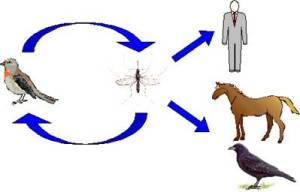 Illinois 09/08/15 stltoday.com: A St. Clair County resident has become the third WNV-related fatality in the state so far this year. – For article see http://www.stltoday.com/lifestyles/health-med-fit/health/first-death-from-west-nile-virus-reported-in-st-clair/article_ad99eb95-b23b-5450-9cc0-59b7547b95c7.html
Illinois 09/08/15 stltoday.com: A St. Clair County resident has become the third WNV-related fatality in the state so far this year. – For article see http://www.stltoday.com/lifestyles/health-med-fit/health/first-death-from-west-nile-virus-reported-in-st-clair/article_ad99eb95-b23b-5450-9cc0-59b7547b95c7.html
North Carolina 09/08/15 wral.com: State authorities on Tuesday reported the first death of 2015 from a confirmed case of WNV. The state Department of Health and Human services did not release the name, age, gender, or location of the person who died, citing confidentiality laws. However, Charles Hogan identified the patient as his father, Roscoe Hogan. Hogan said that his father died at Duke Regional Hospital on Aug. 27. The previous day, doctors told him that his father’s lab results revealed West Nile virus. Roscoe Hogan was 76 at the time of his death and had been a resident of Durham. – For complete article see http://www.wral.com/state-reports-first-2015-death-from-west-nile-virus/14884377/
EASTERN EQUINE ENCEPHALITIS (EEE):
 New York 09/08/15 syracuse,com: by James T. Mulder – An elderly Salina man diagnosed with Eastern equine encephalitis has died, according to the Onondaga County Health Department. It is the sixth reported Eastern equine encephalitis death in Central New York since 1971. The Salina man was the first person in the state and the second in the nation diagnosed this year with the potentially deadly mosquito-borne virus, according to the federal Centers for Disease Control and Prevention. – For article see http://www.syracuse.com/news/index.ssf/2015/09/salina_man_dies_of_eastern_equine_encephalitis.html
New York 09/08/15 syracuse,com: by James T. Mulder – An elderly Salina man diagnosed with Eastern equine encephalitis has died, according to the Onondaga County Health Department. It is the sixth reported Eastern equine encephalitis death in Central New York since 1971. The Salina man was the first person in the state and the second in the nation diagnosed this year with the potentially deadly mosquito-borne virus, according to the federal Centers for Disease Control and Prevention. – For article see http://www.syracuse.com/news/index.ssf/2015/09/salina_man_dies_of_eastern_equine_encephalitis.html
PLAGUE:
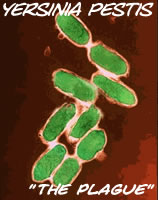 Utah 09/10/15 moabtimes.com: by Molly Marcello – An elderly San Juan County man died after contracting plague last month, according to the Utah Department of Health. While officials do not know exactly how the man contracted the disease, they speculate he was infected by fleas carried by rodents or cats. “The individual lived on a rural property so we’re pretty certain that it likely came from a flea bite from rodents on the property such as prairie dogs, or potentially, cats,” said San Juan County Public Health Director Worthy Glover. “[The man] had a lot of cats in [his] barn to deal with the rodents — those cats could potentially have had fleas.” – For complete article see http://www.moabtimes.com/view/full_story/26850987/article-Elderly-man-in-San-Juan-County-dies-after-contracting-plague?instance=home_news_right
Utah 09/10/15 moabtimes.com: by Molly Marcello – An elderly San Juan County man died after contracting plague last month, according to the Utah Department of Health. While officials do not know exactly how the man contracted the disease, they speculate he was infected by fleas carried by rodents or cats. “The individual lived on a rural property so we’re pretty certain that it likely came from a flea bite from rodents on the property such as prairie dogs, or potentially, cats,” said San Juan County Public Health Director Worthy Glover. “[The man] had a lot of cats in [his] barn to deal with the rodents — those cats could potentially have had fleas.” – For complete article see http://www.moabtimes.com/view/full_story/26850987/article-Elderly-man-in-San-Juan-County-dies-after-contracting-plague?instance=home_news_right
EBOLA VIRUS:
 Global 09/09/15 reuters.com: by Tom Miles – Isolated flare-ups of Ebola may point to a higher risk of transmission via the semen of male survivors than previously thought, undermining hopes of ending West Africa’s deadly outbreak by the end of the year. The World Health Organization’s advice is that all male survivors should be tested three months after the onset of symptoms and then monthly until they know they have no risk of passing on the virus through their semen, Bruce Aylward, head of the WHO’s Ebola response, told a news conference. But a forthcoming study in the New England Journal of Medicine, based on around 200 survivors, found that around half still had traces of the virus in their semen after six months, a clinician familiar with the study told Reuters. “The old advice of three months is no longer good,” the clinician said. “The number of people with persistent virus in their semen is much greater than expected.” The clinician, who was not authorized to speak about the study, added that the risk might not only be from sex but also from masturbation. “It’s not the sex that is dangerous, it’s the semen that is dangerous,” said Aylward, who mentioned the study during a news conference but did not give details. “How people actually get exposed, in soiled linens or whatever, is not clear.”
Global 09/09/15 reuters.com: by Tom Miles – Isolated flare-ups of Ebola may point to a higher risk of transmission via the semen of male survivors than previously thought, undermining hopes of ending West Africa’s deadly outbreak by the end of the year. The World Health Organization’s advice is that all male survivors should be tested three months after the onset of symptoms and then monthly until they know they have no risk of passing on the virus through their semen, Bruce Aylward, head of the WHO’s Ebola response, told a news conference. But a forthcoming study in the New England Journal of Medicine, based on around 200 survivors, found that around half still had traces of the virus in their semen after six months, a clinician familiar with the study told Reuters. “The old advice of three months is no longer good,” the clinician said. “The number of people with persistent virus in their semen is much greater than expected.” The clinician, who was not authorized to speak about the study, added that the risk might not only be from sex but also from masturbation. “It’s not the sex that is dangerous, it’s the semen that is dangerous,” said Aylward, who mentioned the study during a news conference but did not give details. “How people actually get exposed, in soiled linens or whatever, is not clear.”
 Transmission through semen may explain why a few cases continue to occur even though the outbreak has been almost completely eradicated by an intense international effort, recently bolstered by the deployment of a trial vaccine in Guinea and Sierra Leone. “This virus and this outbreak in particular has a nasty sting in the tail,” Aylward said. “It’s not finished, by a long shot.” The latest flare-up, in a village on the northern border of Sierra Leone, followed the death of a 67-year-old woman late last month, 50 days after the previous confirmed case in the region. Transmission chains are considered to have been broken after 42 days with no new infections. However, Aylward said that sexual transmission was “obviously not a huge risk, because if it were we would have seen a lot more in the areas that were hardest hit at the beginning of this outbreak.” – See http://www.reuters.com/article/2015/09/09/us-health-ebola-semen-idUSKCN0R922G20150909?feedType=RSS&feedName=healthNews
Transmission through semen may explain why a few cases continue to occur even though the outbreak has been almost completely eradicated by an intense international effort, recently bolstered by the deployment of a trial vaccine in Guinea and Sierra Leone. “This virus and this outbreak in particular has a nasty sting in the tail,” Aylward said. “It’s not finished, by a long shot.” The latest flare-up, in a village on the northern border of Sierra Leone, followed the death of a 67-year-old woman late last month, 50 days after the previous confirmed case in the region. Transmission chains are considered to have been broken after 42 days with no new infections. However, Aylward said that sexual transmission was “obviously not a huge risk, because if it were we would have seen a lot more in the areas that were hardest hit at the beginning of this outbreak.” – See http://www.reuters.com/article/2015/09/09/us-health-ebola-semen-idUSKCN0R922G20150909?feedType=RSS&feedName=healthNews
FERAL CAT RABIES:
North Carolina 09/08/15 abc11.com: A brown tabby feral cat that attacked and bit a man’s leg in the 500 block of East Cabarrus Street in Raleigh last week has tested positive for rabies. – See http://abc11.com/pets/cat-tests-positive-for-rabies-in-raleigh/974862/
 Pennsylvania 09/10/15 mytwintiers.com: A feral cat that jumped out from under a car and bit the owner on her leg and arm, and the woman’s daughter on the arm, has tested positive for rabies. The incident occurred on Dietz Road,. Wilmot Township, Bradford County. – See http://www.mytwintiers.com/news/local-news/feral-cat-tests-positive-for-rabies-in-bradford-county
Pennsylvania 09/10/15 mytwintiers.com: A feral cat that jumped out from under a car and bit the owner on her leg and arm, and the woman’s daughter on the arm, has tested positive for rabies. The incident occurred on Dietz Road,. Wilmot Township, Bradford County. – See http://www.mytwintiers.com/news/local-news/feral-cat-tests-positive-for-rabies-in-bradford-county
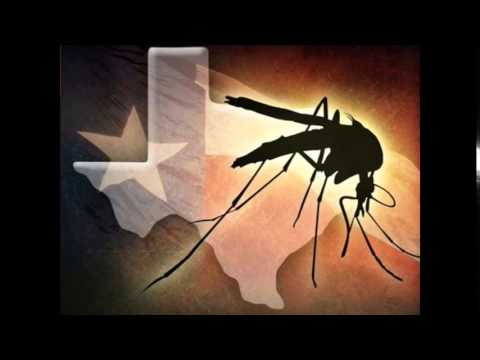
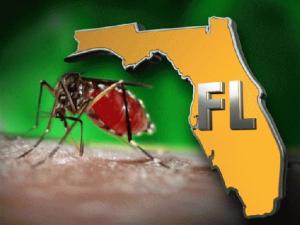 Florida 06/01/16 abcnews.com: Florida health officials say a tourist contracted dengue fever while visiting Key West. A statement Wednesday from the Florida Department of Health in Monroe County says the person, who is not a Florida resident, is recovering. It adds “all indications are that this infection was locally acquired,” and mosquito control officials have intensified their activities in the southernmost city in the continental U.S. Dengue fever is rarely fatal but causes debilitating pain. The virus is transmitted by the same mosquitoes that can carry Zika and chikungunya. – For complete article see http://abcnews.go.com/US/wireStory/health-officials-tourist-contracted-dengue-key-west-39531823
Florida 06/01/16 abcnews.com: Florida health officials say a tourist contracted dengue fever while visiting Key West. A statement Wednesday from the Florida Department of Health in Monroe County says the person, who is not a Florida resident, is recovering. It adds “all indications are that this infection was locally acquired,” and mosquito control officials have intensified their activities in the southernmost city in the continental U.S. Dengue fever is rarely fatal but causes debilitating pain. The virus is transmitted by the same mosquitoes that can carry Zika and chikungunya. – For complete article see http://abcnews.go.com/US/wireStory/health-officials-tourist-contracted-dengue-key-west-39531823 Florida 05/31/16 wmfe.org: by Abe Aboraya- Three unvaccinated horses in Central Florida have caught eastern equine encephalitis. There have been two cases in Polk County and one in Osceola County. All three horses were euthanized or put down in May, and are the first three cases for the state. – For complete article see http://www.wmfe.org/eastern-equine-encephalitis-an-often-fatal-virus-shows-up-in-c-fla-horses/60388
Florida 05/31/16 wmfe.org: by Abe Aboraya- Three unvaccinated horses in Central Florida have caught eastern equine encephalitis. There have been two cases in Polk County and one in Osceola County. All three horses were euthanized or put down in May, and are the first three cases for the state. – For complete article see http://www.wmfe.org/eastern-equine-encephalitis-an-often-fatal-virus-shows-up-in-c-fla-horses/60388 Minnesota 05/27/16 kstp.com: by Sarah Thamer – The University of Minnesota Veterinary Diagnostic Laboratory (VDL) has confirmed three cases of Tularemia in Minnesota since April. Tularemia, a wildlife disease normally found in rabbits, squirrels and other rodents, has now been found in a cat in the Twin Cities. It is a disease that both people and animals can get through tick and fly bites or contact with infected animals. According to the University of Minnesota, three cases of tularemia or rabbit fever in domestic animals have been found since April. The cases have been identified in a cottontail rabbit and two cats – all in the Twin Cities metropolitan area. The disease is rare in Minnesota.
Minnesota 05/27/16 kstp.com: by Sarah Thamer – The University of Minnesota Veterinary Diagnostic Laboratory (VDL) has confirmed three cases of Tularemia in Minnesota since April. Tularemia, a wildlife disease normally found in rabbits, squirrels and other rodents, has now been found in a cat in the Twin Cities. It is a disease that both people and animals can get through tick and fly bites or contact with infected animals. According to the University of Minnesota, three cases of tularemia or rabbit fever in domestic animals have been found since April. The cases have been identified in a cottontail rabbit and two cats – all in the Twin Cities metropolitan area. The disease is rare in Minnesota.


 South Carolina 05/24/16 wfxg.com: by Dal Kalsi – South Carolina veterinary officials are urging horse owners to vaccinate their animals after an unusually early case of Eastern Equine Encephalitis was discovered on the coast, according to a report from Clemson University. “This is the earliest in the spring that we’ve seen this disease in many years,” said Adam Eichelberger, a veterinarian overseeing animal health programs for Clemson University Livestock-Poultry Health. He said a horse in Horry County was euthanized after becoming infected with the mosquito-borne illness in horses that can also affect humans. In unvaccinated horses, Eastern Equine Encephalitis is almost always fatal. “Nine of 10 exposed, unvaccinated horses will succumb to the disease. However, with proper vaccine use the risk of disease is minimized,” Eichelberger said. – For complete article see
South Carolina 05/24/16 wfxg.com: by Dal Kalsi – South Carolina veterinary officials are urging horse owners to vaccinate their animals after an unusually early case of Eastern Equine Encephalitis was discovered on the coast, according to a report from Clemson University. “This is the earliest in the spring that we’ve seen this disease in many years,” said Adam Eichelberger, a veterinarian overseeing animal health programs for Clemson University Livestock-Poultry Health. He said a horse in Horry County was euthanized after becoming infected with the mosquito-borne illness in horses that can also affect humans. In unvaccinated horses, Eastern Equine Encephalitis is almost always fatal. “Nine of 10 exposed, unvaccinated horses will succumb to the disease. However, with proper vaccine use the risk of disease is minimized,” Eichelberger said. – For complete article see  Florida 05/27/16 wfla.com: Health officials have issued a rabies alert in a Sarasota subdivision after a deer tested positive for rabies. The Florida Department of Health in Sarasota County received laboratory confirmation on Monday, May 23,of rabies in a fawn that was found by a property owner in the Myakka Valley Ranches Subdivision on Monday, May 16. A local veterinarian who lives in the area considered that this low-risk animal could be rabid. She recalled that Sarasota County had two low-risk goats test positive for rabies last spring. There was no obvious injury to the fawn. However, the animal was showing signs of illness including twitching in the face, poor muscular coordination, salivating and had no apparent fear of humans. The deer was euthanized and tested positive for rabies. At this point, authorities are not sure how the deer contracted rabies. DOH-Sarasota has issued a rabies alert for 60-days in the Myakka Valley Ranches Subdivision.
Florida 05/27/16 wfla.com: Health officials have issued a rabies alert in a Sarasota subdivision after a deer tested positive for rabies. The Florida Department of Health in Sarasota County received laboratory confirmation on Monday, May 23,of rabies in a fawn that was found by a property owner in the Myakka Valley Ranches Subdivision on Monday, May 16. A local veterinarian who lives in the area considered that this low-risk animal could be rabid. She recalled that Sarasota County had two low-risk goats test positive for rabies last spring. There was no obvious injury to the fawn. However, the animal was showing signs of illness including twitching in the face, poor muscular coordination, salivating and had no apparent fear of humans. The deer was euthanized and tested positive for rabies. At this point, authorities are not sure how the deer contracted rabies. DOH-Sarasota has issued a rabies alert for 60-days in the Myakka Valley Ranches Subdivision. Alaska 05/22/16 abcnews.go.com: by Aditi Roy and Emily Shapiro – An Alaska man says he feels lucky to be alive after coming face-to-face with a brown bear and surviving its terrifying attack. Kenny Steck, his wife Hannah and six family members were hiking in Southeastern Alaska May 13 when he encountered the predator while filling up water bottles. Steck, an experienced outdoorsman, had left his bear repellent back at camp. The massive animal then came charging at him. “It was a feeling of complete hopelessness and helplessness, really. I felt like I couldn’t do anything to make it stop or make the outcome change,” he told ABC News today. When Steck lifted his leg up to protect himself, the bear clawed it. He tried yelling, but the bear crushed his shoulder and put Steck’s head in his mouth. “All I could do was just hope and pray,” he said. “It was terrifying.” Then suddenly the bear let go and ran away. Luckily, his wife and three other family members on the trip are nurses and were able to treat his wounds right away. Steck suffered injuries to his leg, shoulder and head, but the bear miraculously avoided his skull, his wife Hannah said. He’s expected to make a full recovery. – For complete article, photos and video see
Alaska 05/22/16 abcnews.go.com: by Aditi Roy and Emily Shapiro – An Alaska man says he feels lucky to be alive after coming face-to-face with a brown bear and surviving its terrifying attack. Kenny Steck, his wife Hannah and six family members were hiking in Southeastern Alaska May 13 when he encountered the predator while filling up water bottles. Steck, an experienced outdoorsman, had left his bear repellent back at camp. The massive animal then came charging at him. “It was a feeling of complete hopelessness and helplessness, really. I felt like I couldn’t do anything to make it stop or make the outcome change,” he told ABC News today. When Steck lifted his leg up to protect himself, the bear clawed it. He tried yelling, but the bear crushed his shoulder and put Steck’s head in his mouth. “All I could do was just hope and pray,” he said. “It was terrifying.” Then suddenly the bear let go and ran away. Luckily, his wife and three other family members on the trip are nurses and were able to treat his wounds right away. Steck suffered injuries to his leg, shoulder and head, but the bear miraculously avoided his skull, his wife Hannah said. He’s expected to make a full recovery. – For complete article, photos and video see 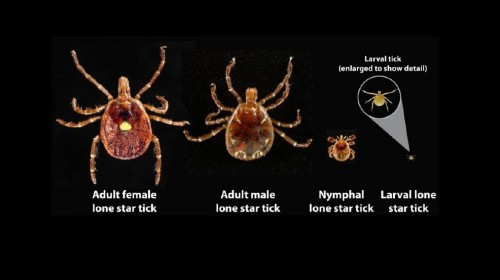
 New Mexico 05/17/16 kcbd.com: State health officials say a 30-year-old man from San Juan County has died of hantavirus. New Mexico Department of Health officials also announced Tuesday that an 84-year-old man from Santa Fe County currently is hospitalized with hantavirus. It’s the third and fourth cases of hantavirus in New Mexico this year. An environmental investigation will be conducted at each patient’s home to help reduce the risk to others. Hantavirus is a deadly disease transmitted by infected rodents through urine, droppings or saliva. Authorities say the deer mouse is the main carrier for the hantavirus strain found in New Mexico. – For complete article see
New Mexico 05/17/16 kcbd.com: State health officials say a 30-year-old man from San Juan County has died of hantavirus. New Mexico Department of Health officials also announced Tuesday that an 84-year-old man from Santa Fe County currently is hospitalized with hantavirus. It’s the third and fourth cases of hantavirus in New Mexico this year. An environmental investigation will be conducted at each patient’s home to help reduce the risk to others. Hantavirus is a deadly disease transmitted by infected rodents through urine, droppings or saliva. Authorities say the deer mouse is the main carrier for the hantavirus strain found in New Mexico. – For complete article see  Pennsylvania 5/12/16 pennlive.com: by Marcus Schneck – In announcing that a record 12 white-tailed deer were found to be infected with chronic wasting disease in 2015, the Pennsylvania Game Commission said targeted removal of deer may be on the table as it considers options to fight the spread of the disease. The commission outlined possible “active control measures” that could involve targeted removal of deer in locations where CWD-positive animals have been found. The 12 free-ranging deer with CWD were found in Disease Management Area 2, which last year covered all or parts of Bedford, Blair, Cambria, Fulton, Huntingdon and Somerset counties, but has now been expanded by 437 square miles. Special rules regarding the hunting, transport and feeding of wild deer apply within all DMAs. CWD is an always fatal neurological disease of white-tailed tree and other members of the deer family. – For complete article see
Pennsylvania 5/12/16 pennlive.com: by Marcus Schneck – In announcing that a record 12 white-tailed deer were found to be infected with chronic wasting disease in 2015, the Pennsylvania Game Commission said targeted removal of deer may be on the table as it considers options to fight the spread of the disease. The commission outlined possible “active control measures” that could involve targeted removal of deer in locations where CWD-positive animals have been found. The 12 free-ranging deer with CWD were found in Disease Management Area 2, which last year covered all or parts of Bedford, Blair, Cambria, Fulton, Huntingdon and Somerset counties, but has now been expanded by 437 square miles. Special rules regarding the hunting, transport and feeding of wild deer apply within all DMAs. CWD is an always fatal neurological disease of white-tailed tree and other members of the deer family. – For complete article see  North Carolina 5/12/16 wlos.com: by Krystyna Biassou & Rex Hodge – A backcountry camping area in the Great Smoky Mountains National Park is closed after a bear attack on a hiker. Rangers say 49-year-old Bradley Veeder of Las Vegas was bitten on his leg late Tuesday night while sleeping in his tent near the Spence Field shelter. That’s along the Appalachian Trail. Fellow hikers rendered aid. “He had 2 puncture wounds on his leg and we just did some First Aid, wrapped it up, called the park rangers, let them know it wasn’t life-threatening. They came in on horses in the morning and picked him up and brought a horse for him to ride down,” says Derek Roecklein. Veeder, an Appalachian Trail thru-hiker, was transported out of the backcountry by horseback and taken to Blount Memorial Hospital by Rural Metro Ambulances Service on Wednesday. The bear initially ran off, but returned and tore up two tents. – For video and complete article see
North Carolina 5/12/16 wlos.com: by Krystyna Biassou & Rex Hodge – A backcountry camping area in the Great Smoky Mountains National Park is closed after a bear attack on a hiker. Rangers say 49-year-old Bradley Veeder of Las Vegas was bitten on his leg late Tuesday night while sleeping in his tent near the Spence Field shelter. That’s along the Appalachian Trail. Fellow hikers rendered aid. “He had 2 puncture wounds on his leg and we just did some First Aid, wrapped it up, called the park rangers, let them know it wasn’t life-threatening. They came in on horses in the morning and picked him up and brought a horse for him to ride down,” says Derek Roecklein. Veeder, an Appalachian Trail thru-hiker, was transported out of the backcountry by horseback and taken to Blount Memorial Hospital by Rural Metro Ambulances Service on Wednesday. The bear initially ran off, but returned and tore up two tents. – For video and complete article see  Virginia 5/13/16 scnow.com: Five people have been referred to their health care providers for consultation after potentially being exposed to rabies in the Lynchburg area of Lee County by a stray dog that tested positive for the disease, the Department of Health and Environmental Control (DHEC) reported Friday. The stray dog began showing neurological symptoms and was submitted to DHEC’s laboratory for testing on May 9. Rabies was confirmed in the dog on May 11. During care and handling of the dog, a total of five people were potentially exposed. It is unknown how the dog contracted the rabies virus, however, bite wounds were discovered on the animal. In addition, five pet dogs were potentially exposed to the rabies virus by the stray dog. None of these pets was current on its rabies vaccination and is required to undergo a 180-day quarantine period or be euthanized per the Rabies Control Act. – For complete article see
Virginia 5/13/16 scnow.com: Five people have been referred to their health care providers for consultation after potentially being exposed to rabies in the Lynchburg area of Lee County by a stray dog that tested positive for the disease, the Department of Health and Environmental Control (DHEC) reported Friday. The stray dog began showing neurological symptoms and was submitted to DHEC’s laboratory for testing on May 9. Rabies was confirmed in the dog on May 11. During care and handling of the dog, a total of five people were potentially exposed. It is unknown how the dog contracted the rabies virus, however, bite wounds were discovered on the animal. In addition, five pet dogs were potentially exposed to the rabies virus by the stray dog. None of these pets was current on its rabies vaccination and is required to undergo a 180-day quarantine period or be euthanized per the Rabies Control Act. – For complete article see 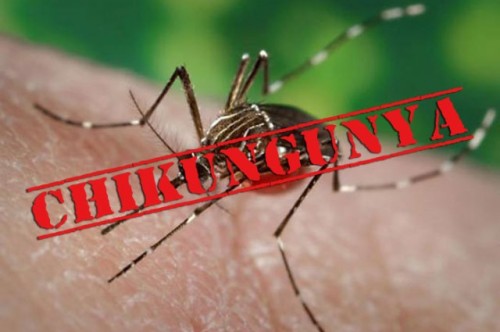
 Missouri 05/06/16 ozarksfirst.com: The first confirmed case of rabies has been reported to the Howell County Health Department by the Missouri State Public Health Lab in Jefferson City. The case involved a rabid 8 week old puppy near the Moody area, which became ill and died. Howell County Health Department officials say the puppy had exposure to 32 people who have started Post Exposure Prophylactic shots. The puppy’s mother, 5 littermates, and 2 other dogs have had to be euthanized due to exposure to a rabid animal, all of which were not current on rabies vaccinations.- For complete article see
Missouri 05/06/16 ozarksfirst.com: The first confirmed case of rabies has been reported to the Howell County Health Department by the Missouri State Public Health Lab in Jefferson City. The case involved a rabid 8 week old puppy near the Moody area, which became ill and died. Howell County Health Department officials say the puppy had exposure to 32 people who have started Post Exposure Prophylactic shots. The puppy’s mother, 5 littermates, and 2 other dogs have had to be euthanized due to exposure to a rabid animal, all of which were not current on rabies vaccinations.- For complete article see  Colorado 05/05/16 fox21news.com: by Angela Case – A wild rabbit found in Pueblo West has tested positive for tularemia, also known as rabbit fever. The rabbit was found in the Liberty Point area. The Pueblo City-County Health Department said it had no contact with people. Tularemia is a bacterial infection most commonly transmitted to humans by the handling of sick or dead animals. Infection can also occur from the bite of infected insects, including ticks and deer flies, and exposure to soil and vegetation. Dogs and cats get tularemia by eating infected rabbits or other rodents and through tick and deer fly bites. – See
Colorado 05/05/16 fox21news.com: by Angela Case – A wild rabbit found in Pueblo West has tested positive for tularemia, also known as rabbit fever. The rabbit was found in the Liberty Point area. The Pueblo City-County Health Department said it had no contact with people. Tularemia is a bacterial infection most commonly transmitted to humans by the handling of sick or dead animals. Infection can also occur from the bite of infected insects, including ticks and deer flies, and exposure to soil and vegetation. Dogs and cats get tularemia by eating infected rabbits or other rodents and through tick and deer fly bites. – See 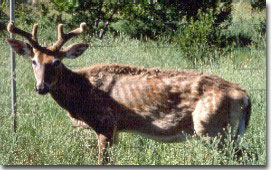
 Saskatchewan 05/05/16 cbc.ca/news: by Stefani Langenegger – A Saskatchewan woman says it was both her scariest and her luckiest day — she fought off a black bear after it bit her on the leg during an afternoon walk. Raschel Zeschuk lives in Paradise Hill, northeast of Lloydminster, and goes on daily walks with her two dogs. But on April 21 the walk was anything but routine. Zeschuk had just reached the end point of her usual route and turned around to return home when she heard rustling behind her. Behind her dog was a black bear in hot pursuit. She says she started to scream in an effort to scare the bear off and looked around for higher ground. “All I could kind of think of was, ‘Get up on something,'” Zeschuk said. She began running towards some poplar trees which had fallen over in the bush. “The bear immediately turned away from my dog and started chasing me,” Zeschuk said. “It caught up to me pretty fast.” The bear grabbed her leg, scratching it on one side and biting it on the other. Zeschuk scrambled up on the poplar tree, which gave way and she fell backwards. “This is where it’s kind of hazy,” she said. Her dog, Cosmo, began barking and Zeschuk had time to scramble back up on the tree. “It started trying to climb up after me and that’s when I kicked it in the nose as hard as I could and it ran off,” she said. Zeschuk says she then ran home as quickly as she could. She has six stitches in her leg and is getting her last rabies shot today. Zeschuk says she loves hiking and is working with someone to overcome her anxiety about future walks, given her recent experience. Mostly she just feels very grateful. – For complete article and photos see
Saskatchewan 05/05/16 cbc.ca/news: by Stefani Langenegger – A Saskatchewan woman says it was both her scariest and her luckiest day — she fought off a black bear after it bit her on the leg during an afternoon walk. Raschel Zeschuk lives in Paradise Hill, northeast of Lloydminster, and goes on daily walks with her two dogs. But on April 21 the walk was anything but routine. Zeschuk had just reached the end point of her usual route and turned around to return home when she heard rustling behind her. Behind her dog was a black bear in hot pursuit. She says she started to scream in an effort to scare the bear off and looked around for higher ground. “All I could kind of think of was, ‘Get up on something,'” Zeschuk said. She began running towards some poplar trees which had fallen over in the bush. “The bear immediately turned away from my dog and started chasing me,” Zeschuk said. “It caught up to me pretty fast.” The bear grabbed her leg, scratching it on one side and biting it on the other. Zeschuk scrambled up on the poplar tree, which gave way and she fell backwards. “This is where it’s kind of hazy,” she said. Her dog, Cosmo, began barking and Zeschuk had time to scramble back up on the tree. “It started trying to climb up after me and that’s when I kicked it in the nose as hard as I could and it ran off,” she said. Zeschuk says she then ran home as quickly as she could. She has six stitches in her leg and is getting her last rabies shot today. Zeschuk says she loves hiking and is working with someone to overcome her anxiety about future walks, given her recent experience. Mostly she just feels very grateful. – For complete article and photos see 
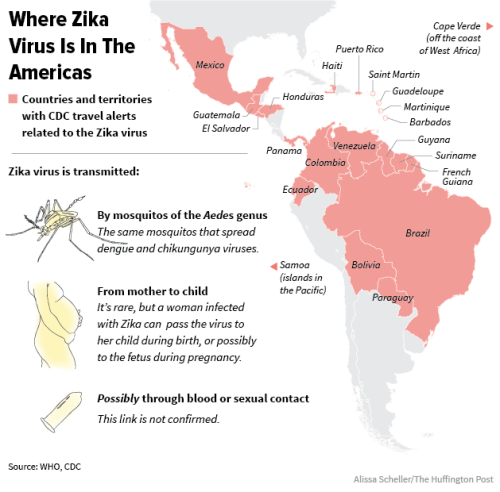



 first in the United States born with Zika virus. The U.S. Centers for Disease Control and Prevention said Sunday it’s also the first infant born in the country with microcephaly associated with Zika virus, a birth defect where a baby’s head is smaller than expected. Babies with the condition often have smaller brains that might not have developed properly, often resulting in mental retardation. The virus, which is transmitted through mosquito bites, has affected between 440,000 and 1.3 million people in Brazil since last May, officials estimate. Researchers say they’ve found strong evidence that a recent surge in microcephaly in the country — 3,530 babies have been born with the condition since October, up from fewer than 150 in 2014 — is linked to Zika virus. – For complete article see
first in the United States born with Zika virus. The U.S. Centers for Disease Control and Prevention said Sunday it’s also the first infant born in the country with microcephaly associated with Zika virus, a birth defect where a baby’s head is smaller than expected. Babies with the condition often have smaller brains that might not have developed properly, often resulting in mental retardation. The virus, which is transmitted through mosquito bites, has affected between 440,000 and 1.3 million people in Brazil since last May, officials estimate. Researchers say they’ve found strong evidence that a recent surge in microcephaly in the country — 3,530 babies have been born with the condition since October, up from fewer than 150 in 2014 — is linked to Zika virus. – For complete article see 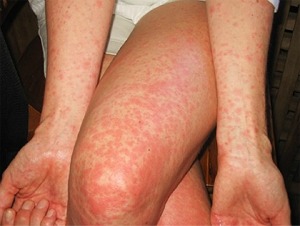 in pregnant women, with the associated birth defects becoming apparent only 9 months later. “By that time, it is too late,” Dr Hotez said. “This first case of Zika infection in Harris County is a wake-up call, a warning that we should immediately start implementing programs of active surveillance. As we move into the spring and summer months, if we start seeing cases among people who have never traveled outside of the country, we need to implement aggressive mosquito control measures as well as health advisories for people to implement personal protection measures.” – For complete article see
in pregnant women, with the associated birth defects becoming apparent only 9 months later. “By that time, it is too late,” Dr Hotez said. “This first case of Zika infection in Harris County is a wake-up call, a warning that we should immediately start implementing programs of active surveillance. As we move into the spring and summer months, if we start seeing cases among people who have never traveled outside of the country, we need to implement aggressive mosquito control measures as well as health advisories for people to implement personal protection measures.” – For complete article see  road, campground and hiking trail in an effort to stop the spread of a dengue fever outbreak that has sickened 223 residents and visitors as of Friday. Five of those cases could be potentially infectious, according to the Hawaii Department of Health. The Hawaii Department of Land and Natural Resources closed the Muliwai hiking trail on the far cliff side of Waipio Valley and its Waimanu Valley campground on Friday. Hawaii County’s Civil Defense Agency blocked all traffic to Waipio Valley Access Road on Thursday and limited access to residents. The road closure comes three weeks after health officials closed access to state lands near Milolii and Honomalino Bay, which were “hotspots” for the mosquito-borne virus. – For complete article see
road, campground and hiking trail in an effort to stop the spread of a dengue fever outbreak that has sickened 223 residents and visitors as of Friday. Five of those cases could be potentially infectious, according to the Hawaii Department of Health. The Hawaii Department of Land and Natural Resources closed the Muliwai hiking trail on the far cliff side of Waipio Valley and its Waimanu Valley campground on Friday. Hawaii County’s Civil Defense Agency blocked all traffic to Waipio Valley Access Road on Thursday and limited access to residents. The road closure comes three weeks after health officials closed access to state lands near Milolii and Honomalino Bay, which were “hotspots” for the mosquito-borne virus. – For complete article see  Syndrome. The rare but potentially fatal disease, which has no vaccine or cure, is spread by infected rodent droppings. It is the fourth confirmed case of hantavirus reported in Coconino County since 2006. Two of those cases resulted in death. It is not known at this time where the recently deceased individual contracted hantavirus. Studies show that wild mice throughout Arizona have been infected with hantavirus. It is transmitted to humans when they breathe air contaminated with the virus. If fresh rodent droppings, urine or nesting materials from infected animals are stirred up, tiny droplets containing the virus get into the air. Exposure to mouse droppings in enclosed areas such as cabins, sheds and outbuildings poses the greatest potential risk for contracting hantavirus. – For complete article including symptoms and recommendations see
Syndrome. The rare but potentially fatal disease, which has no vaccine or cure, is spread by infected rodent droppings. It is the fourth confirmed case of hantavirus reported in Coconino County since 2006. Two of those cases resulted in death. It is not known at this time where the recently deceased individual contracted hantavirus. Studies show that wild mice throughout Arizona have been infected with hantavirus. It is transmitted to humans when they breathe air contaminated with the virus. If fresh rodent droppings, urine or nesting materials from infected animals are stirred up, tiny droplets containing the virus get into the air. Exposure to mouse droppings in enclosed areas such as cabins, sheds and outbuildings poses the greatest potential risk for contracting hantavirus. – For complete article including symptoms and recommendations see 


